Master Guide: How To Make Autoflower Seeds Successfully
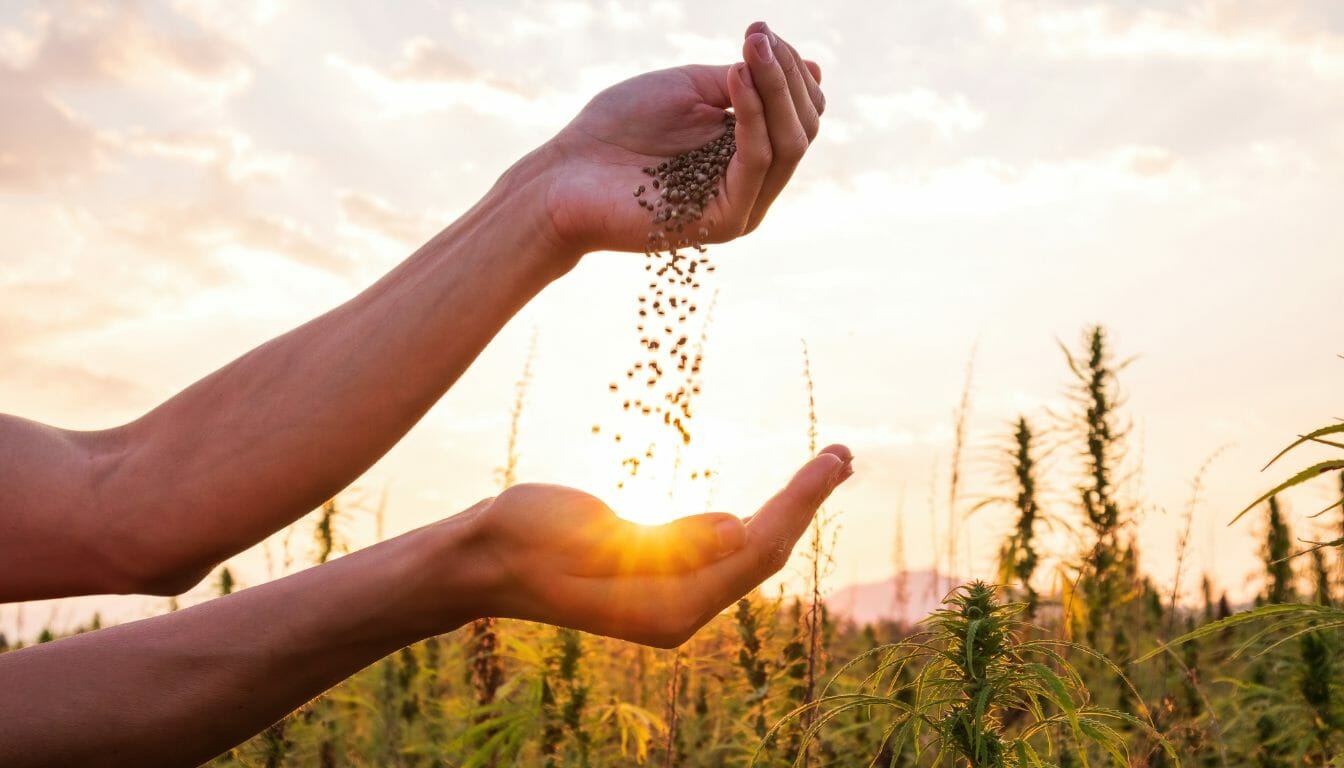
If you’re a cannabis enthusiast looking to take your growing game to the next level, learning how to make autoflower seeds is an excellent way to do so. With the right knowledge and techniques, you can create your own high-quality autoflower strains at home. And the good news is, you don’t need to be an expert to get started!
Autoflowering cannabis seeds have gained in popularity in recent years due to their unique characteristics. Unlike traditional cannabis strains, which require a specific light cycle to begin flowering, autoflowers start flowering automatically after a certain period of time. This makes them ideal for growers who want a quicker turnaround, less maintenance, and a more discreet setup. Additionally, breeding your own autoflower strains allows you to create genetics that are tailor-made for your specific needs, from flavor and aroma to potency and yield.
If you’re ready to start making your own autoflower seeds, there are a few things you’ll need to know first. In this guide, we’ll cover everything from understanding autoflowering cannabis seeds and the benefits of breeding your own autoflower strains to techniques for producing autoflower seeds and troubleshooting common issues. Keep reading to learn more!
Key Takeaways:
- Autoflowering cannabis seeds flower automatically after a certain period of time, making them a great option for quicker turnaround and less maintenance.
- Breeding your own autoflower strains allows you to create genetics that are tailor-made for your specific needs.
- Techniques for producing autoflower seeds include both self-pollination and cross-pollination.
Understanding Autoflowering Cannabis Seeds
If you’re new to the world of growing cannabis, you may be unfamiliar with the concept of autoflowering cannabis seeds. Unlike photoperiod cannabis seeds, autoflower seeds are genetically engineered to flower automatically after a short vegetative period. This unique trait makes them a popular choice for growers looking for a quick turnaround time and smaller plants.
Autoflowering cannabis seeds are the result of cross-breeding various cannabis plants, including ruderalis, an indigenous strain from Russia. These plants are adapted to survive in harsh climates with limited sunlight, so they’ve evolved to flower automatically in just a few weeks.
One of the biggest advantages of growing autoflowering strains is their short life cycle. In just 60-90 days, you can harvest a crop of small, but potent, buds. This makes them an ideal choice for growers who want to produce multiple harvests per year and don’t have the space or resources for larger plants.
Another advantage of autoflowering cannabis seeds is their ability to flower in any light cycle. Unlike regular cannabis plants, which require specific light and dark periods to flower, autoflowering strains will begin to flower regardless of their light cycle. This means you can grow them indoors or outdoors without having to worry about light leaks or light schedules.
Autoflowering strains also tend to be more resistant to pests and diseases than regular cannabis plants. This is because they’re bred to be hardy and resilient, making them a great choice for outdoor gardens where pests and disease can be a major issue.
Understanding Autoflowering Cannabis Seeds
Autoflowering cannabis seeds are different from photoperiod cannabis seeds in several ways. One of the most notable differences is their life cycle. While photoperiod cannabis plants require a specific light cycle to initiate flowering, autoflowering strains will begin to flower after a certain amount of time, regardless of light conditions.
Another difference is their size. Autoflowering strains tend to be smaller than other cannabis plants, making them a great choice for growers with limited space. They’re also easier to manage and less conspicuous, making them a great choice for discreet growing operations.
Finally, autoflowering strains tend to mature faster than photoperiod cannabis plants. This means you can harvest multiple crops per year, making them a great choice for growers who want to produce a lot of cannabis in a short amount of time.
Benefits of Breeding Autoflower Strains
One of the biggest advantages of breeding autoflower strains is the ability to create unique genetics tailored to your specific needs. By selecting parent plants with desirable traits, you can create a strain that is high-yielding, disease-resistant, and has a unique flavor and aroma profile.
In addition to creating a personalized strain, breeding autoflower seeds also allows for greater control over the growing process. By selecting for certain traits, such as faster flowering times or increased potency, you can create plants that are better suited for your growing environment.
Another benefit of breeding autoflower strains is the potential for higher yield and potency. By selecting the best traits from the parent plants, you can create a strain with strong genetics that produces more buds and has a higher THC content.
It is important to note that breeding autoflower strains requires some knowledge and experience in cannabis cultivation. However, with the right resources and guidance, anyone can successfully breed autoflower seeds and create their own unique strain.
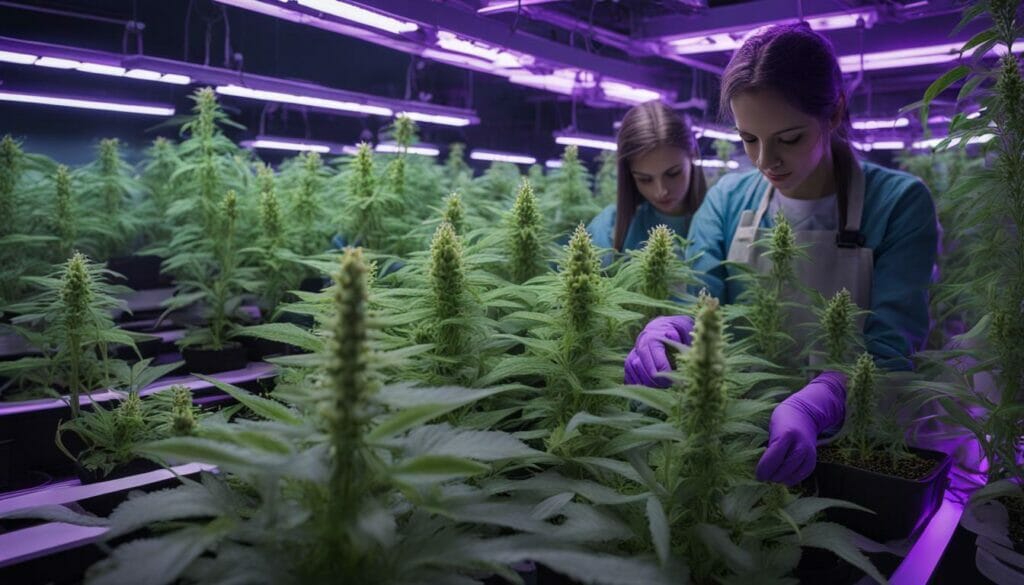
Understanding Autoflower Cross-Pollination
Autoflower cannabis plants are unique in that they automatically flower without requiring any changes in the light cycle. This characteristic makes them a popular choice for growers as they are easy and quick to cultivate. However, when it comes to breeding, autoflower plants require special attention to ensure genetic purity.
Autoflower cross-pollination is a common issue when trying to maintain genetic purity. Cross-pollination occurs when pollen from one plant fertilizes the female flowers of another plant. This results in a hybrid offspring with genetics from both parent plants. While this may be desirable in some cases, it can be detrimental when trying to maintain genetic purity.
If you’re planning on breeding autoflower strains, it’s important to isolate plants to prevent accidental cross-pollination. One way to ensure genetic purity is to grow your plants indoors in a controlled environment. This allows you to control the pollination and avoid any unwanted cross-pollination.
You can also physically isolate plants by using barriers such as walls or plastic sheets. Be sure to cover the plants completely, including the top and sides, to prevent any accidental cross-pollination. Another option is to stagger the planting times to allow for proper isolation of each plant.
| Tip | Be sure to label each plant to keep track of parentage and to avoid any confusion during the pollination process. |
|---|
By taking these precautions, you can ensure that your autoflower strains remain genetically pure, allowing for consistent and predictable plant traits. It may require some extra effort, but the end result will be well worth it.
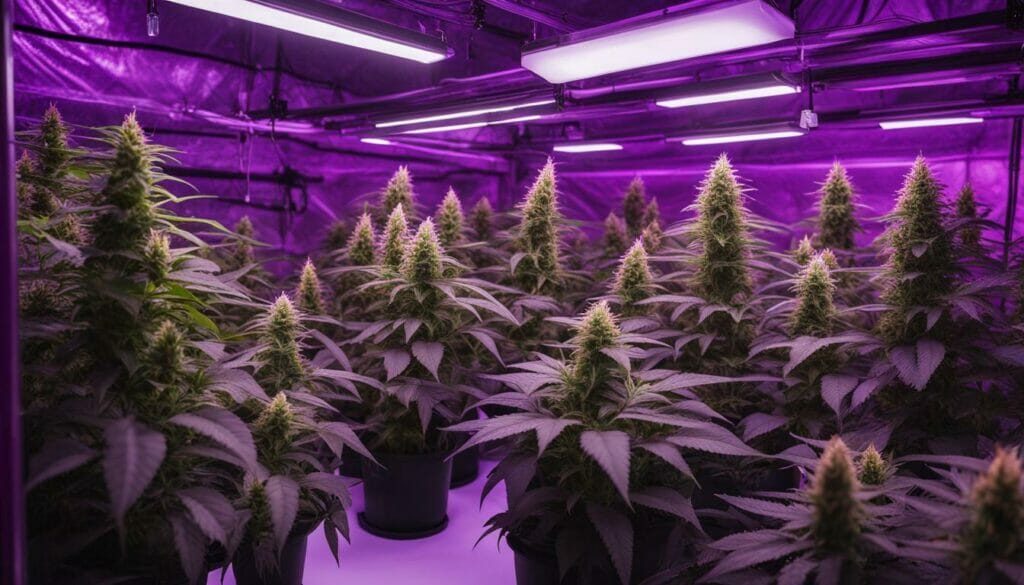
Techniques for Producing Autoflower Seeds
There are several techniques to produce autoflower seeds, including self-pollination and cross-pollination. The most common and easiest technique is self-pollination, which involves pollinating a female autoflower plant with male pollen that comes from the same plant. This technique ensures genetic stability and purity but only produces a small number of seeds.
Cross-pollination, on the other hand, involves pollinating a female plant with male pollen from a different plant. This technique can produce a larger quantity of seeds, but it also carries a higher risk of genetic variation and instability. It’s important to choose pollen from a healthy and genetically stable male plant to prevent unwanted traits from being passed on to the offspring.
To maximize seed production, it’s crucial to use the right environmental conditions. The temperature and humidity should be kept within a specific range, and the plants should be exposed to adequate light to promote growth and development.
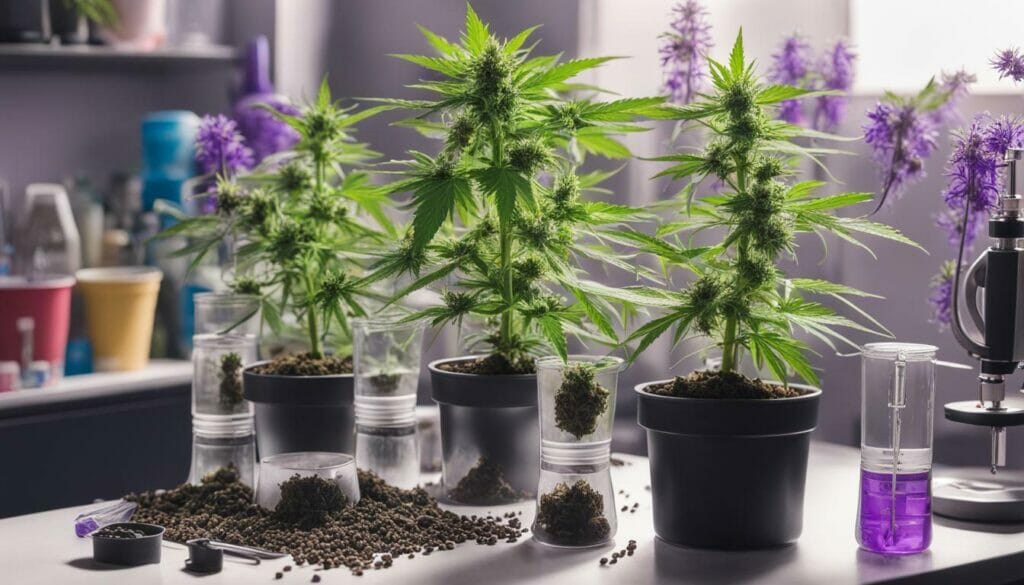
Producing autoflower seeds requires attention to environmental conditions and choosing the right pollination technique.
DIY Autoflower Seed Making
In addition to buying autoflower seeds from reputable seed banks such as Seeds Here Now, you may also choose to make your own autoflower seeds at home. This can be a cost-effective way to expand your breeding program and create unique genetics. Here are the steps involved in DIY autoflower seed making:
Selecting Parent Plants
Before you begin, you must select the parent plants that will be used for breeding. Choose plants with desirable traits and good genetics to ensure that you produce high-quality seeds. Remember that autoflower crosses may not always exhibit the same traits as their parents, so be prepared for some variability.
Creating the Breeding Environment
Once you have selected your parent plants, you will need to create the ideal breeding environment. Separate the male and female plants to avoid accidental pollination, and carefully monitor the plants for optimal growth conditions. You may want to consider using a grow tent or other enclosed space to maintain control over the environment.
Pollination
When it comes time to pollinate, there are two options: self-pollination or cross-pollination. For self-pollination, simply collect pollen from the male flowers and brush it onto the female flowers. Cross-pollination requires a bit more effort; you will need to collect pollen from a separate male plant and transfer it to the female plant’s flowers. Remember to only pollinate the female plants that you wish to produce seeds from.
Harvesting and Storing Seeds
After pollination, the female plants will begin to produce seeds. Allow the seeds to fully mature and dry on the plant before harvesting. Once harvested, store the seeds in a cool, dry place to maintain viability.
Making your own autoflower seeds can be a rewarding and cost-effective way to expand your breeding program. Just remember to carefully select your parent plants, create the ideal breeding environment, and monitor the plants throughout the process.
Tips for Breeding Autoflower Seeds
Breeding autoflower seeds can be a challenging process even for experienced growers. However, with a few tips and tricks, the process can become more manageable, and the chances of success increase. Here are some best practices to keep in mind when breeding autoflower strains:
| Tip | Description |
|---|---|
| Select healthy parent plants | It’s essential to select healthy parent plants that exhibit the desired traits. Plants that are stressed or diseased may produce weak offspring with a higher susceptibility to diseases. |
| Time pollination carefully | Pollination should occur when the flowers are fully mature and receptive, but not too late when the seeds may have already begun forming. It’s crucial to monitor plants closely and perform pollination at the right time. |
| Monitor for hereditary issues | Keep track of hereditary issues that may arise in the parent plants or offspring. Diseases or other undesirable traits may be passed down through the generations, so monitoring for hereditary issues can help prevent future problems. |
| Select the best seeds for future breeding | When selecting seeds for future breeding, it’s essential to choose the ones that exhibit the desired traits. Seeds that produce healthy, vigorous plants with high yields and excellent resistance to diseases are ideal. |
By following these tips, growers can increase their chances of producing healthy, high-yielding autoflower strains with desirable traits.
Ensuring Genetic Stability in Autoflower Strains
One of the most important aspects of breeding autoflower strains is ensuring genetic stability. This is crucial for producing consistent and predictable plant traits.
Stable genetics can be achieved through selective breeding and phenotype selection. By selecting plants with desirable traits and breeding them together, you can create a stable genetic line.
| Tip | Description |
|---|---|
| Select healthy parent plants | Choose parent plants with strong genetics and no signs of disease or weakness. |
| Proper timing for pollination | Ensure that your plants are at the right stage of growth for pollination. |
| Monitor for possible hereditary issues | Stay vigilant for any potential genetic abnormalities that may arise. |
Keep in mind that genetic stability is an ongoing process. Even the most stable genetic lines can develop mutations or changes over time. Regular phenotype selection and breeding can help maintain genetic stability in your autoflower strains.
Best Practices for Autoflower Seed Storage
Proper storage is crucial for maintaining the viability of your autoflower seeds. To maximize seed longevity and ensure high germination rates, follow these best practices:
| Factor | Best Practice |
|---|---|
| Temperature | Store seeds in a cool, dark place with a constant temperature around 40-50°F (5-10°C). Avoid exposing seeds to extreme temperatures, which can damage their genetic material and reduce germination rates. |
| Humidity | Keep seeds in an airtight container with a desiccant packet to absorb moisture. Aim for a relative humidity level of 5-10%. Excessive humidity can lead to mold growth and seed deterioration. |
| Light Exposure | Store seeds in a dark place, away from direct sunlight and artificial light sources. UV radiation can break down the genetic material in seeds and reduce their viability. |
By following these guidelines, you can increase the longevity of your autoflower seeds and maintain their genetic stability. Keep in mind that seed viability decreases over time, so it’s best to use or germinate your seeds within 2-3 years of storage.
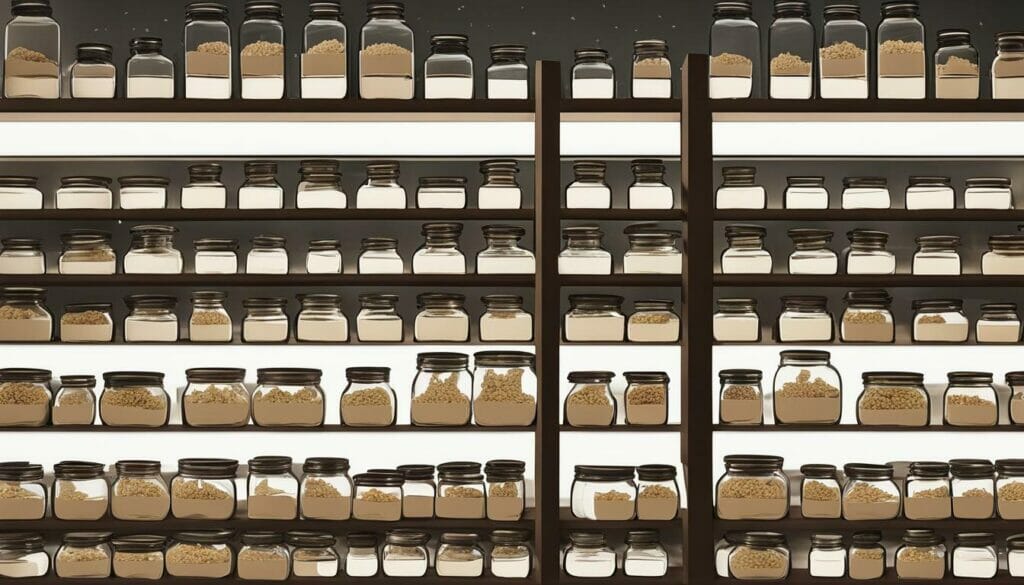
Tips for Avoiding Common Mistakes in Autoflower Seed Making
While breeding autoflower strains can be a rewarding experience, there are several common mistakes that beginners make. Here are some tips to help you avoid these pitfalls:
- Don’t rush the process: It’s important to take your time and not rush the breeding process. Rushing can lead to mistakes and reduce the chances of a successful outcome.
- Use healthy parent plants: Selecting healthy parent plants is crucial for producing quality seeds. Make sure the plants are disease-free and free from pests.
- Avoid inbreeding: Inbreeding can lead to a loss of genetic diversity and weaken the overall gene pool. Be sure to introduce new genetics into the breeding process and avoid using closely related plants.
- Provide proper environmental conditions: Temperature, humidity, and lighting all play a critical role in plant growth and seed production. Make sure to provide the appropriate conditions for optimal growth.
- Pay attention to the timing: Timing is everything when it comes to breeding. Be mindful of the flowering periods of each parent plant and make sure to pollinate at the right time.
By following these tips, you’ll be on your way to successfully breeding your own autoflower strains. Don’t be discouraged if you encounter some setbacks along the way, as breeding can be a challenging but ultimately rewarding experience.
Troubleshooting Common Issues
Despite your best efforts, problems may occur during the seed-making process. Here are some common issues and how to troubleshoot them:
| Issue | Troubleshooting Tips |
|---|---|
| Low Seed Production | Make sure you have chosen healthy parent plants and that the environment is optimal for the plants’ growth. You can also try using different pollination techniques or introducing more genetic diversity to increase seed production. |
| Weak Seedlings | Weak seedlings may indicate poor genetics, so make sure you have chosen healthy parent plants and ensured their genetic stability. You can also check the quality of the soil, water, and nutrients and make sure they are suitable for seedling growth. |
| Hereditary Abnormalities | Hereditary abnormalities can occur when poor genetics have been passed down. Make sure you have selected healthy parent plants and have stabilized their genetic traits. You can also monitor the plants closely during the growing process to catch any signs of abnormalities early on. |
Don’t be discouraged if you encounter setbacks when making autoflower seeds. Troubleshooting common issues can help you overcome any problems and ultimately produce successful results.
How To Make Autoflower Seeds: Conclusion
So, there you have it: a master guide on how to make autoflower seeds successfully. Breeding your own autoflower strains can be a fun and rewarding experience, allowing you to create unique genetics tailored to your needs and preferences.
As we discussed, understanding the characteristics of autoflowering cannabis seeds and the principles of cross-pollination are key to producing high-quality seeds. Whether you choose to use a professional seed bank or make your own seeds at home, it’s important to follow best practices for ensuring genetic stability and seed viability.
We hope this guide has been helpful in your journey to becoming a successful autoflower seed breeder. Don’t hesitate to reach out to the experts at SeedsHereNow.com if you have any questions or need assistance in selecting the best autoflowering cannabis seeds for your needs. Happy breeding!
FAQ
Q: What are autoflowering cannabis seeds?
A: Autoflowering cannabis seeds are a type of cannabis seed that has been bred to flower automatically, without the need for a specific light cycle. They have a shorter life cycle and are usually ready for harvest in a shorter period of time compared to regular cannabis seeds.
Q: What are the benefits of growing autoflowering strains?
A: Autoflowering strains have several advantages. They have a shorter life cycle, allowing for faster harvests. They are also more resistant to pests and diseases. Additionally, they can be grown in smaller spaces and require less maintenance, making them ideal for beginners and those with limited growing space.
Q: Why should I breed my own autoflower strains?
A: Breeding your own autoflower strains allows you to create unique genetics that are tailor-made for your specific needs. It gives you the opportunity to develop high-yielding, disease-resistant strains that are well-suited to your growing environment. Breeding also allows for the preservation and improvement of desirable traits.
Q: How can I prevent cross-pollination in autoflower plants?
A: To prevent cross-pollination in autoflower plants, it is important to isolate them from other cannabis plants. This can be done by growing them in separate areas or using physical barriers such as nets or tents. It is also recommended to stagger the flowering times of different autoflower plants to minimize the risk of accidental cross-pollination.
Q: What techniques can I use to produce autoflower seeds?
A: There are two main techniques for producing autoflower seeds: self-pollination and cross-pollination. Self-pollination involves using pollen from the same plant to fertilize the flowers. Cross-pollination involves using pollen from a different plant to fertilize the flowers. Both techniques can be successful, and the choice depends on your specific breeding goals.
Q: Can I make autoflower seeds at home?
A: Yes, it is possible to make autoflower seeds at home. DIY autoflower seed making requires careful selection of parent plants, creating the ideal breeding environment, and ensuring proper pollination. It is important to research and follow the correct techniques to increase the chances of successful seed production.
Q: What are some tips for breeding autoflower seeds?
A: Some tips for breeding autoflower seeds include selecting healthy parent plants with desirable traits, timing the pollination carefully to ensure successful fertilization, and monitoring for any hereditary issues in the offspring. It is also important to keep detailed records and select the best seeds for future breeding projects.
Q: How can I ensure genetic stability in autoflower strains?
A: Genetic stability in autoflower strains can be achieved through selective breeding and phenotype selection. By carefully choosing parent plants with desirable traits and consistent genetics, you can increase the chances of producing offspring with predictable and desired characteristics.
Q: How should I store autoflower seeds?
A: Autoflower seeds should be stored in a cool, dry, and dark place to maintain their viability. It is important to protect them from temperature fluctuations, excess humidity, and exposure to light. Storing them in airtight containers or seed banks can help prolong their longevity and maintain high germination rates.
Q: What are common mistakes to avoid when making autoflower seeds?
A: Common mistakes when making autoflower seeds include improper pollination, lack of genetic diversity, and poor environmental conditions. It is important to ensure proper cross-pollination techniques, introduce genetic diversity through careful selection of parent plants, and provide optimal growing conditions for successful seed production.
Q: What should I do if I encounter issues during the autoflower seed-making process?
A: If you encounter issues during the autoflower seed-making process, it is important to troubleshoot and address them promptly. Common issues may include low seed production, weak seedlings, or hereditary abnormalities. Research and seek advice from experienced breeders to identify the cause of the problem and find appropriate solutions.
Suggested Articles
;)
;)
;)




 03 Jul 2025
03 Jul 2025  10 min read
10 min read
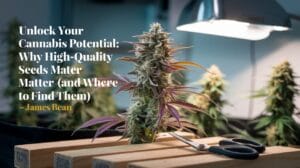
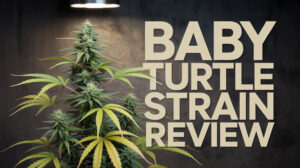
 August 29, 2023
August 29, 2023 


RESPONSES (0)
No responses yet. Be the first to respond!